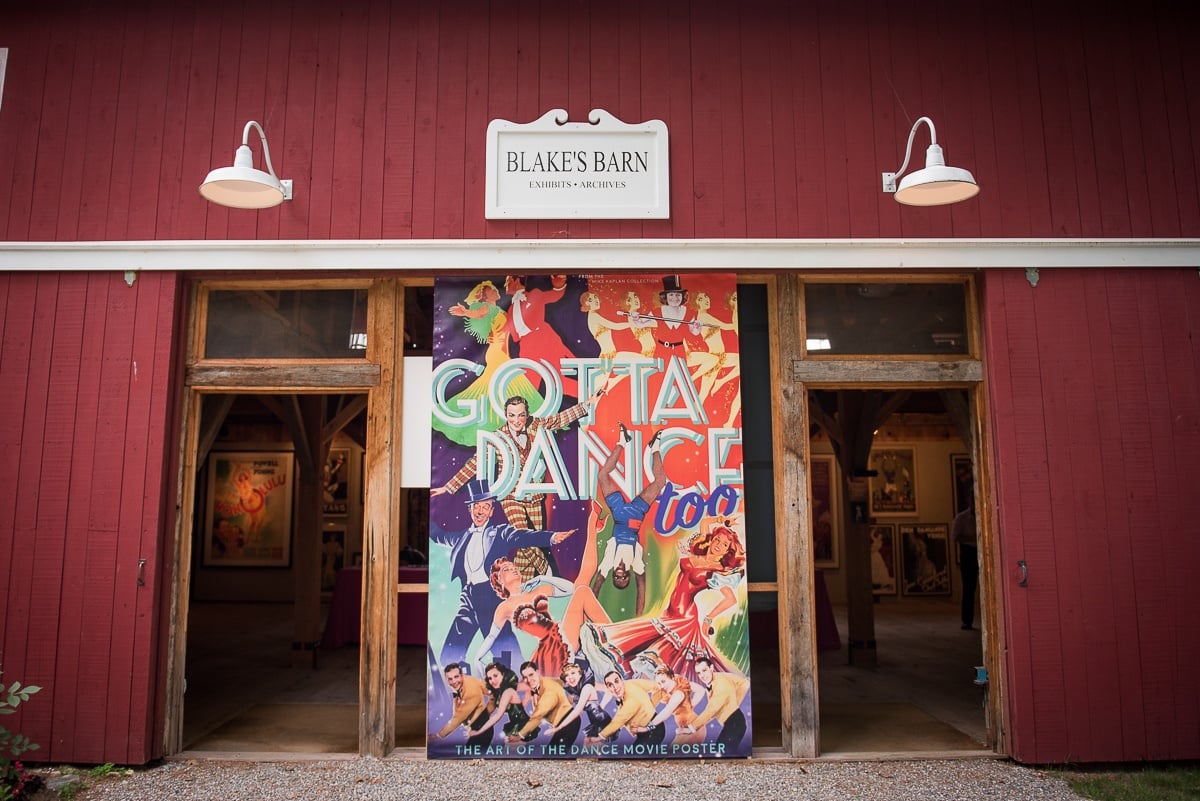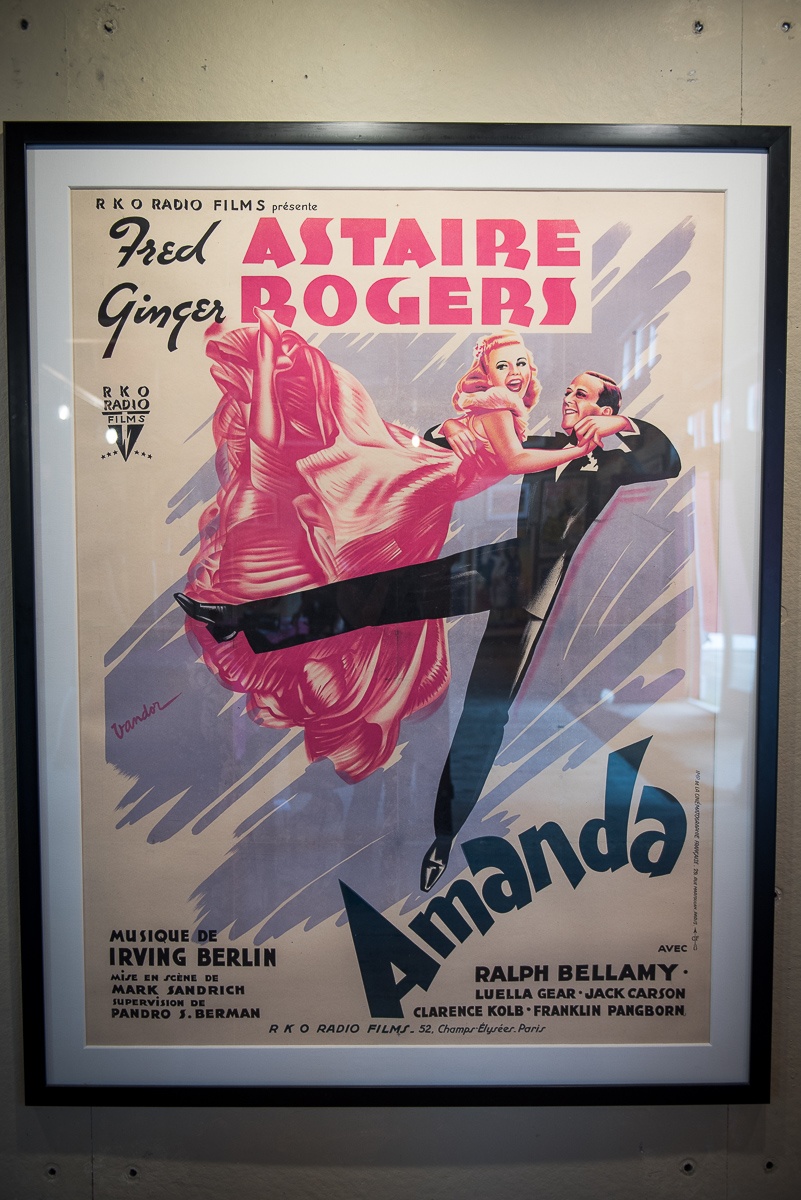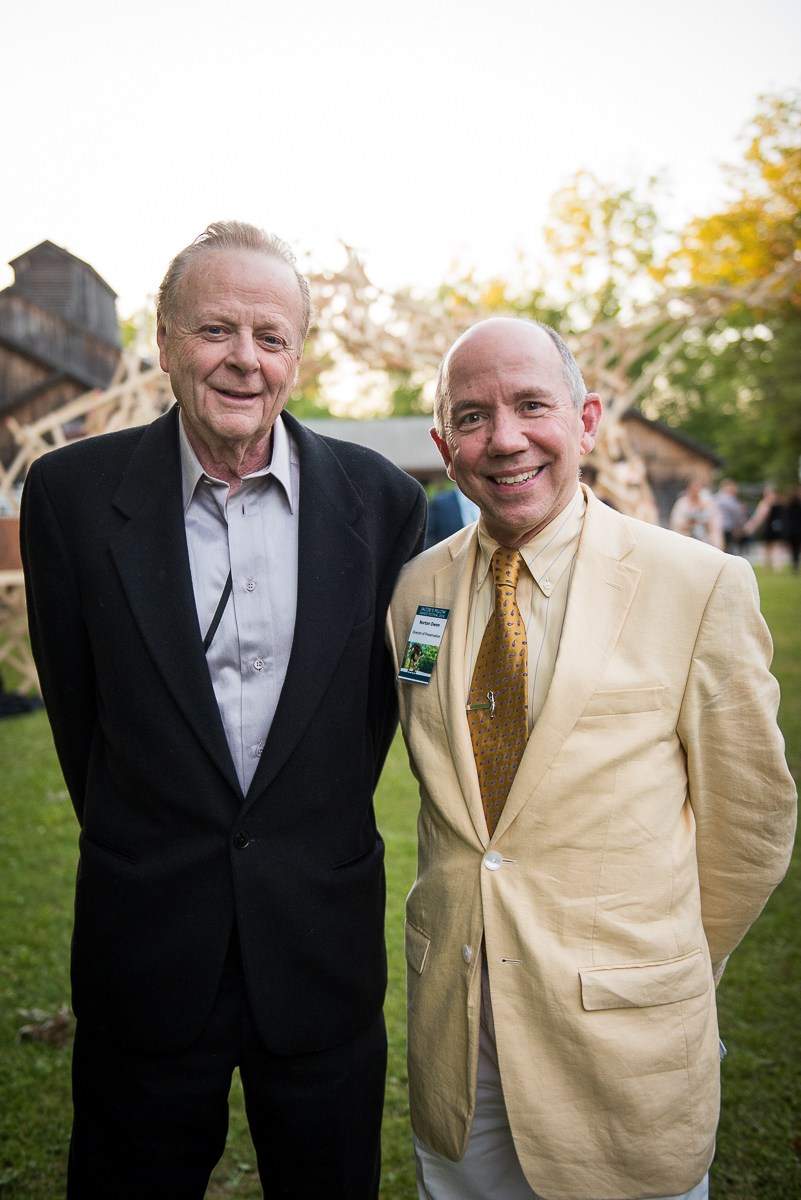Jacob’s Pillow is excited to showcase Gotta Dance, Too!, a new exhibit on display this summer in Blake’s Barn. After the hugely popular 2014 Gotta Dance! exhibit, former film executive Mike Kaplan is back at the Pillow with exciting new pieces from his collection of original dance movie posters. These vibrant colored posters featuring dancers, movie stars, and screen legends line the walls and ceilings of Blake’s Barn. The exhibit is free and open to the public and can be seen Wednesday-Saturday, noon through final curtain, and Sunday-Tuesday, noon to 5pm.
Jacob’s Pillow Festival Intern Rachel Chozick sat down with Mike Kaplan to discuss his favorite vintage movie posters and how his collection began.

How did you become interested in collecting movie posters?
When I was a kid we used to get The New York Times every Sunday. The Arts and Leisure section used to have full page ads of all the plays that were opening. I used to color them in with pastels and compare them with the real posters when I went to New York with my parents.
When I joined the film industry after college I was able to get new movie posters, although the new posters were gradually getting less interesting. I didn’t even realize you could get older movie posters until someone I worked with told me there were these funky memorabilia shops in New York that had them. The old posters were fascinating and remarkable, and I gradually became more interested. As a marketing person in the film business, I began designing campaigns and posters myself, it was kind of a busman’s holiday of collecting them as well.
How did you find the foreign movie posters in your collection?
I first discovered foreign movie posters when I moved to Los Angeles. There was an exhibit of French movie posters in the Beverly Wilshire Hotel and I had never seen them before. They are a revelation to people who see them for the first time because they are three times as large as American posters and they have beautiful artwork signed by the prominent designers and painters who created them. They gradually became more available in America as more people discovered them, but they are still not as widely collected as American posters. They are wonderful and of real value. It started with French posters, then Italian, Belgian, Swedish, and more. You become internationally aware of how movie posters were presented in different countries during that period—now it’s uniformly the same everywhere.
How did you first get your posters displayed at Jacob’s Pillow in 2014?
Movie posters are special because movies move. They are filled with motion and dance movie posters invariably have a lot of motion and feeling in them. Dance movie posters were the first posters I gravitated towards because I’ve always loved dance. I had an exhibit of 28 dance movie posters at Lincoln Center, New York in the Roy Furman Gallery. Norton Owen had seen it, so he called me and said they were doing a tribute to celebrate Marge Champion, one of the great screen dancers and a former Trustee at Jacob’s Pillow. He asked me if I had any Marge Champion posters. I had some, but I got a few more for the 2014 exhibit of Gotta Dance! at Jacob’s Pillow. There was a special section dedicated to Marge and the Champions, along with 50 more images. The exhibit was extremely successful. When it was over we agreed to wait some years and do it again.
“Movie posters are special because movies move.”
Do you have a favorite poster in your collection?
I don’t have a favorite poster because they all come with their own history. There’s one poster in this exhibit that was in the previous exhibit. It’s one of my favorites; a Fred Astaire and Ginger Rogers French poster from the film Carefree called Amanda (Ginger’s name in the movie). There’s a rare Swedish poster of Josephine Baker from 1927 and another Swedish poster of Anna May Wong. They both have a gold texture to it from a special printing process using gold ink. There are dance images from musical films as well as dance images from nonmusical dramas and comedies. The posters show the impact that dance has across the board. There are 14 Fred Astaire posters, a Western-themed section, black-and-white posters, and they’re all mixed up. I even have posters of movie stars that you don’t expect to see dancing. You can see actors and actresses like John Wayne, Cary Grant, Olivia de Havilland, Hedy Lamarr, Marlene Dietrich, Laurence Olivier, and Abbott & Costello in dance mode across the exhibit. That’s a part of the collection that I really like because you don’t expect it.

What was your first poster? How many posters do you have in your collection?
I previously toyed with collecting vintage posters, but in the late ’70s, I found a poster for a film called Irish Eyes Are Smiling that sparked my interest and officially began the collection. It was a stone lithography poster which means the texture of the printing was very rich. Each color goes on a stone which has to be rubbed onto the piece. The film starred June Haver, a musical comedy actress from that period, that I had a crush on when I was a kid. It was a beautifully designed poster and it had a full-length image of June about how to do an Irish Jig.
“I bought that poster and the collection began, all due to June Haver.”
I have thousands in my collection and I’m looking for a permanent home for them, ideally in a museum so they are kept together. Recognizing movie posters as an art form with a museum isn’t easy because they haven’t always been thought of that way.

FESTIVAL 2018 EXHIBITS
Take in a variety of art and photography exhibits to enliven your Festival 2018 experience.